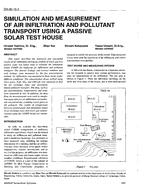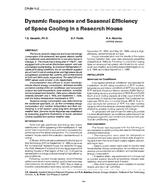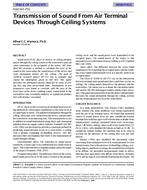Click here to purchase
With increasing insulation, cooling in buildings gains importance regarding overall primary energy consumption.By integrating lakes in cooling systems, this consumption can be reduced. To optimally design these systems,it is beneficial to have insight in the dynamic thermal behavior of the lake and its interaction with the coolingsystem. As simulations can provide such insight, a one dimensional lake model is calibrated and validated in thispaper. In order to do so, first the lake’s depth was mapped in preliminary measurements. After that, temperature and light intensity at its center were measured at 15 different depths for 11 months. Weather conditions were logged in detail by a national weather station nearby the lake. The preliminary measurements showed that the lake had a maximum depth of 7.8m, a surface area of 16000m2 and a total volume of 100000m3. The data of the light intensityshowed a time-dependency throughout the year. The calibrated model estimates most data with an error of only±2??C. Therefore, it can be used to analyse the potential of the lake for cooling purposes.
Citation: ASHRAE/IBPSA-USA Bldg Simulation Conf, Sept 2018
Product Details
- Published:
- 2018
- Number of Pages:
- 8
- Units of Measure:
- Dual
- File Size:
- 1 file , 1.7 MB
- Product Code(s):
- D-BSC18-C060


